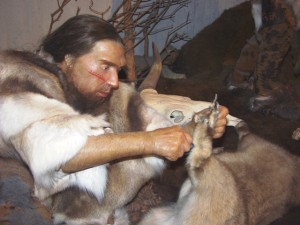
Abstract
In the past there have been numerous theories for the cause(s) of autism, Asperger’s syndrome, and Tourette syndrome. Most of these theories can at best explain small parts of these diverse syndromes. Many of them extend their findings in spectacular ways to be able to claim to explain larger parts of the autism spectrum with little success.
This theory approaches the problem from a new radical viewpoint. Instead of approaching autism as a disorder, brain defect or the result of poor socialization or parenting, it claims that autistics are fully functional.
All the areas that are central to autism are related to species-typical adaptations that vary widely between species. These include nonverbal signals, social organization, sensory acuteness, motor skills, general preferences, sexuality, physical traits and biological adaptations. Some of this diversity in autistics is poorly understood and virtually unresearched and therefore is not published in peer-reviewed journals. Because of this lack of research, Aspie-quiz, an online questionnary, is heavily referenced for these traits.
Recent genetic research have demonstrated that the Out-of-Africa (OoA) model with no interbreeding fails to explain nuclear DNA diversity in Eurasia. Several models of interbreeding that do explain this diversity exists today. It therefore is quite likely that Neanderthals contributed to the Caucasian genome. Aspie-quiz have demonstrated in a large survey in the US population that Afroamericans have only 1/6 of the autism prevalence of Caucasians. The same survey also indicates that Asians and American Indians have about 1/2 of the autism prevalence of Caucasians.
Principal Component Analysis (PCA) of Aspie-quiz yields axises that seems to be related to the first Eurasian Homo, the formation of modern humans in Africa or South Asia and the hybridization between modern humans and Neanderthals in Europe. These axises seems to be 1.8 million years, 150,000 years and 37,000 years, which fits pretty good with the archaeologic evidences available. . . . Read complete report







Leave a Reply